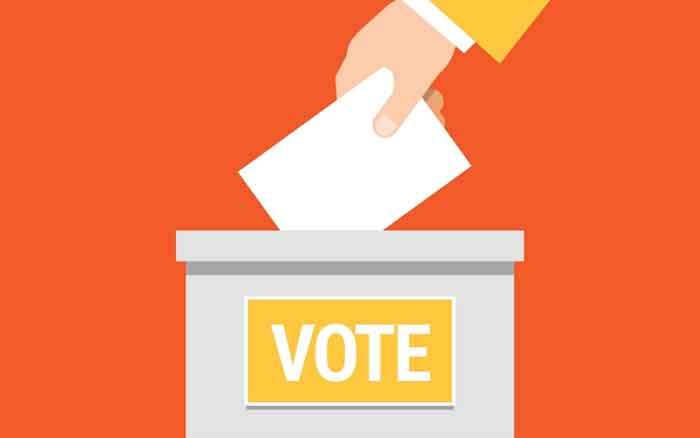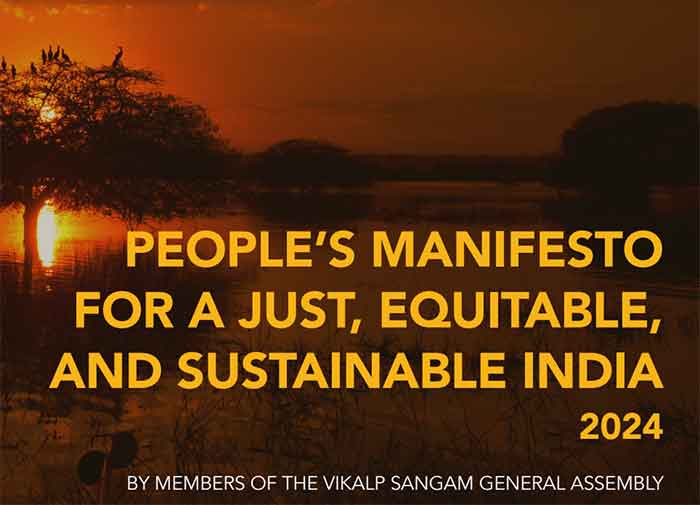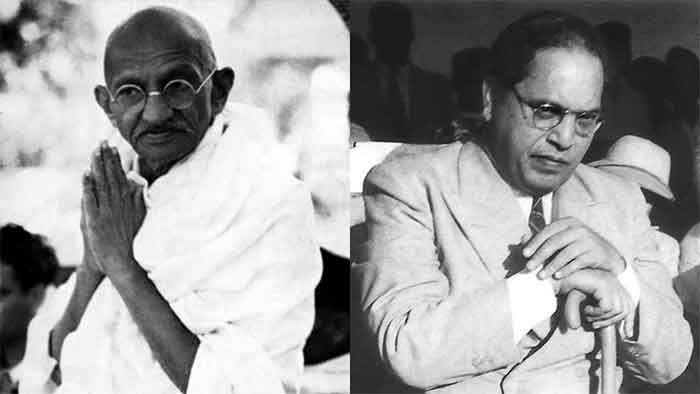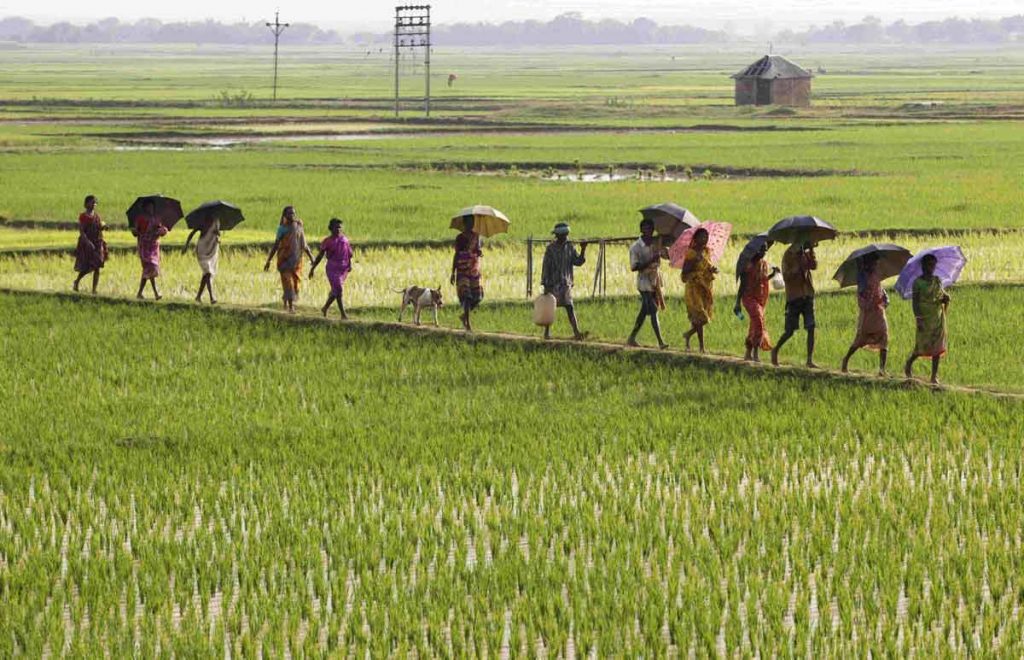
India is the second-most populous country, the seventh-largest country by area, and the most populous democracy in the world. India is a diverse country in every aspect of life viz. social, political, economic, geographical etc. India has been a secular federal republic since 1950, governed in a democratic parliamentary system. It is a pluralistic, multilingual and multi-ethnic society.
The President of India is the supreme commander of the armed forces, the first citizen but more of a ceremonial head of the state. The Prime Minister is head of the state who enjoys the maximum executive powers. The federal structure also enables a similar mechanism at the state level corresponding as the Governor and the Chief Minister. This entire structure is bound by the book of law, the Constitution of India.
The Indian Electoral System is based on First Past the Post model, wherein, voters cast their vote for a candidate of their choice, and the candidate who receives the most votes wins, even if they received less than half of the votes. There have been instances wherein the winning margin has been just one vote, In 2004 Karnataka assembly elections, a candidate won by just one vote. Rajasthan Congress chief C P Joshi lost 2008 assembly elections by one vote. Since 1962, two MPs have been elected after securing just 9 votes more than runners-up.[1] On an average, the winning candidate gets 35% votes of the total votes polled, but some have even managed to get through with less than 10% votes of the total votes polled.
First Past the Post (FPTP), is a legacy of British colonialism, which ended in 1947. The British introduced self-government to India in stages, but it was not until the end of colonial rule and the adoption of the Indian Constitution in 1950 by a Constituent Assembly that universal suffrage was achieved. The Constituent Assembly, which comprised a number of eminent jurists, lawyers, constitutional experts and political thinkers and laboured for almost three years, debated the issue of which electoral system should be adopted at great length before finally choosing an FPTP electoral system. Various systems of proportional representation were considered and attracted many advocates, given India’s extremely diverse and multi-ethnic society, but FPTP was chosen mainly to avoid fragmented legislatures and to help the formation of stable governments – stability being a major consideration in a developing country with widespread poverty and illiteracy.[2]
Power as a resource for decision making can apply to all and not exclusively to those who have the dominant power. Governance is the exercise of responsibility by the authority. Governance is the distribution of values, both material and spiritual. Material wealth, normative and space are the three components of values. The close interconnectedness between material and spiritual values has always been highly visible in the emergence of governance, the State and the Nation-State.
FPTP has been an instrumental tool to able the concentration of power in the hands of a few. It is extremely difficult for a novice to enter the parliament unless there is a backing of tremendous muscle power combined with enormous money power. The ones who are in power remain in power irrespective of the party in power. Shifting political sides is a norm and accepted by the people who have a subconsciousness of monarchical state. The collective consciousness of the nation being feudalistic has enabled the state to exercise its powers on the weakest ruthlessly and violently.
Today democracy’s dominant context seems to plunder of wealth and its accumulation by select few individuals and is justified legally. This form of democracy had developed along with colonization and it inherently has been abler to corporate colonialism writing off people happiness and well-being. The trinity of Neoliberal policies, Liberal and private marketplace combined with illusionary globalisation has given birth to corporate colonial powers who can control the democratic structure at their wills and fancies.
With the emergence of cultural and religious nationalism in mainstream, FPTP has driven the country towards a democratically elected dictatorial state. This engineered nationalism intentionally denies the nationalism of others and strives hard to construct a nation on such denial. In the process of building such a nation, it is deeply aware that there will be conflicts and in order to win the conflict it promotes and glorifies violence. All this can be seen in the grand election year through the speeches of the nationalist leaders.
The pros of FPTP have been used to mainstream the discourse of majoritarianism in a diverse country with voices unheard from multiple corners. A clear stable government, winning verdict of the majority, centralised decision making, imposed for the development and safety of its people, token representation for selective sections but without power and authority are some of the elements hailed by the ‘majority’ of people.
In FPTP, under the Indian context, the word ‘majority’ itself is a misnomer and illusionary. India is one of the extremely diversified counties in the world. Majority is a misnomer as no percentage of population is in majority. A county divided on multiple identities simply cant have the concept and thought of majority, yet this has been installed with a superficial identity and continues to rule the land. The thought of one person ruling subjects of the count of 1.35 cr is itself dangerous. Never in documented history has such a ruler existed.
The Electoral Reform Society is an independent campaigning organisation based in the United Kingdom that advocates abolishing FPTP for all elections. It argues FPTP is “bad for voters, bad for government and bad for democracy”. It is the oldest organisation concerned with electoral methods in the world.
The solution to this lies in Proportional Representation electoral system. While globally multiple variants of Proportional representation (PR) system exist, India needs a customised solution to suit its needs and diversity. Under PR, the party that gets the percent of votes gets the percent of seats. The odds are highly in favour for PR in India, understanding the current circumstances and index of democracy.
Proportional Representation has its foundation in the representative skeleton of the society. Only a party or coalition that gains more than fifty percent of votes and seats will be able to gain the power to govern, provides legal space for small minorities, integrates intraparty democracy as a necessary pre-requisite for contesting elections, enhancing bargaining power of smaller parties within coalitions of parties. reduces the abnormal play of money and muscle power in elections, increases voter interest in electoral processes by enhancing the representation of voters.
A lot of variants of the models of Proportional Representation exist globally. India needs a customised solution to suit its diversified needs. The most talked about model is the German model of Mixed Member Proportional Representation, with some modifications. Also, on the same lines is the Parallel model in Japan and Nepal. The MMPR has been discussed in the Law Commission Report 170, Reform of the Electoral Laws, 1999, and many other forums on Electoral Reforms across the nation. It would be futile to talk about a model now as the concept has yet not been accepted and just in conceiving stage, but it is vital to note the characteristics needed out of the Electoral System.
In PR, at large, the vote is given to the party and not to the candidate. While there are systems where the vote is given to the candidate and not to the party. In Mixed-Member PR, the voter has two votes one for the party and one for the candidate, and same is in parallel system. There can also be two round system where voting happens twice to choose the best of the best giving voters more power. The best of the PR model is Single Transferable vote, wherein the voter ranks the candidate and not chooses one and denies others.
In recent times, in India, it doesn’t matter what the mandate has been the government has been formed by hook or crook at times post elections results and at times post few months after the peoples mandate. A group of MLA resigns and joins the opposition thereby making the elected government unstable and collapse on the floor of the house. The opposition then forms the government manipulating the system to its best. This has been accepted by the people as peoples mandate and political masterstrokes, while in principles it is murder of democratic mandate. It would be futile to blame the parties that take benefit of this provision under FPTP. In PR, the party percent vote share shall not change until next elections, thereby reducing the chances of the winning candidate to shift sides. The government is decided by the percent of vote of the party and not dependent on the winning candidates choice, whims and fancies. The government shall always be either the party or the coalition with 50% and more vote share respecting peoples mandate. In case of a sitting elected representative passing away, resigning, quitting, there would not be need for a by election, in most PR models.
India has a lot of parties, polling extremely low votes, such candidates/parties are many a times used only to cut vote of a candidate by the opponent thereby enabling a victory. This gives extra room for corruption and caste politics. This loophole of FPTP is used lavishly by Indian politicians. In PR this would be controlled to a major extent, as parties would have to focus mainly on increasing their vote-share and not reducing opponents vote-share.
One of key aspect of List PR, is threshold. This is the minimum percent of votes needed by a party to secure a seat in the parliament. Every country has customised its threshold limit as per the dynamics of the nation. India being extremely diverse needs to have a lower threshold in order to accommodate the diversity. A higher threshold shall have same consequence as in FPTP, and would defeat the objective of PR.
While the population has been steadily rising, the corresponding number of representatives is constant. The worlds second largest country has in total 790 (545 LS + 245RS) members in parliament. This needs a serious relook, and should be scaled up proportionately. While some opine the dismissal of Rajya Sabha, this thought should not only be negated but the number of members nominated by the President be increased along with the new scope beyond arts, literature, sciences, and social services as it is today.
The Prime Minister, is senior-most member of cabinet in the executive of government, is overloaded with responsibilities and work. A large diversified population surely needs a lot more detailed attention and it is not possible for one person to manage. The cabinet is surely a big helping hand but is restricted to its ministry. A council of Prime Minsters can be thought of thereby helping the person to have more effective execution of governance. This council should be devoid of any ministry and should act as a facilitator for quick effective decisions. It would be good to have 4 such PMs in the council. While the supreme commander shall always remain one, the President of India.
The foundation for Proportional Representation was laid in the debates of the Constituent Assembly. Kazi Syed Karimuddin proposed that FPTP be substituted with “system of proportional representation with multi-member constituencies by means of cumulative vote.” He argued that FPTP perpetuates ‘tyranny of the majority’ and believed that proportional representation was ‘profoundly democratic’ as it ensures that every voice of the populace was represented. More importantly, he highlighted how FPTP led to disfranchisement and non-representation of religious minorities in Ireland. KT Shah came in support of proportional representation through single transferable vote. He argued that this system was a ‘greater reflection of popular will’ and would secure a politically diverse government.[3]
M. Ananthasayanam Ayyangar was not convinced by these attacks on FPTP. He offered two arguments opposing proportional representation. First, it was impractical to implement proportional representation as some constituencies had large populations. Second, proportional representation was too ‘advanced’ for our India in light of the poor rate of literacy.
B R Ambedkar too, believed that proportional representation did not suit Indian conditions. He pointed out that Karimuddin assumed that Indian citizens were literate and could read numbers. Also, he invoked British Parliament’s refusal to adopt proportional representation as it threatened stability of government. He argued that minority interests were better secured through reservation in legislature rather than proportional representation.
The arguments then in opposition to PR and in favour of FPTP have to be relooked in the present context. India has moved from Ballot box to EVM voting, the country has leaped in literary rates. A country with huge force in Software development and technology and a population embracing digitisation surely has answered Ayyangar’s arguments. While Ambedkar’s arguments of securing minority interests can also be addressed in Proportional Representation through reservation, multi member seats or separate electorate. This FPTP has in last 70 odd years has not addressed the minority interest but rather used the minority as vote bank politics. This would be minimised in PR system. PR models across the world have proved PR to be extremely inclusive and securing minority interests.
India has been in coalition era since more than few decades. While some coalition governments lasted full term, a few were unable to complete their term. Since last 15 years Indian governments have been stable and completed their full term. The electorate is now comfortably matured with the idea of coalition ruling government. The argument of stability of government is stands neutralised.
Many are apprehensive that there would be a need for constitutional amendment. The first-past-the-post (FPTP) is system encoded in Article 81 of the Constitution of India, but not clearly mentioned as FPTP.
Article 81 :
(1) Subject to the provisions of article, the House of the People shall consist of —
(a) not more than 4 [five hundred and thirty members] chosen by direct election from territorial constituencies in the States, and
(b) not more than 5 [twenty members] to represent the Union territories, chosen in such manner as Parliament may by law provide.
The term used here is ‘Direct Election’ not FPTP. This is open to interpretation and the best interpretation should be done by the Election Commission and or the Supreme Court of India. Proportional Representation is also a form of Direct Election. Indirect Election is when representatives vote to elect, eg. Rajya Sabha.
A suitable model considering the literacy, technology skills of the voter, and the inclusivity of a system would be Single Transferable Vote, which provides maximum choice to the voter. The most discussed model weighing benefits of both FPTP and Pure PR is Mixed Member PR, it has also been mentioned in Law Commission Report. A unique model practised in Finland has made it possible to vote for one individual candidate only. Some countries do not have a legally mandated threshold. Considering all aspects, an Indian Model has to be designed to suit our governance needs.
The future of this nation has to be inclusive and not exclude anyone on any grounds. The nation has had a history of Republics, and direct democracy was practised at village level. The parliamentary democracy is colonial gift and needs to be Indianised to suit our diverse large population. Electoral System is the foundation, and this core needs to be reformed.
Vivek Sakpal is a publishing-and-IT consultant for NGO’s and Managing Director at Peoples Literature Publication OPC Pvt Ltd. https://twitter.com/viveksakpal
[1] https://www.indiatoday.in/elections/lok-sabha-2019/story/har-ek-vote-jaroori-hota-hai-when-elections-were-won-by-just-one-extra-vote-1498396-2019-04-10
[2] https://aceproject.org/main/english/es/esy_in.htm
[3] https://www.constitutionofindia.net/blogs/why_did_the_constitution_framers_choose_first_past_the_post_system_over_proportional_representation_
SIGN UP FOR COUNTERCURRENTS DAILY NEWSLETTER














































